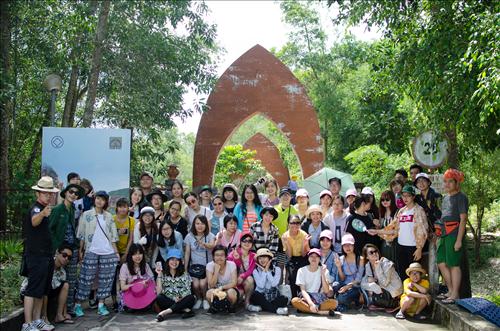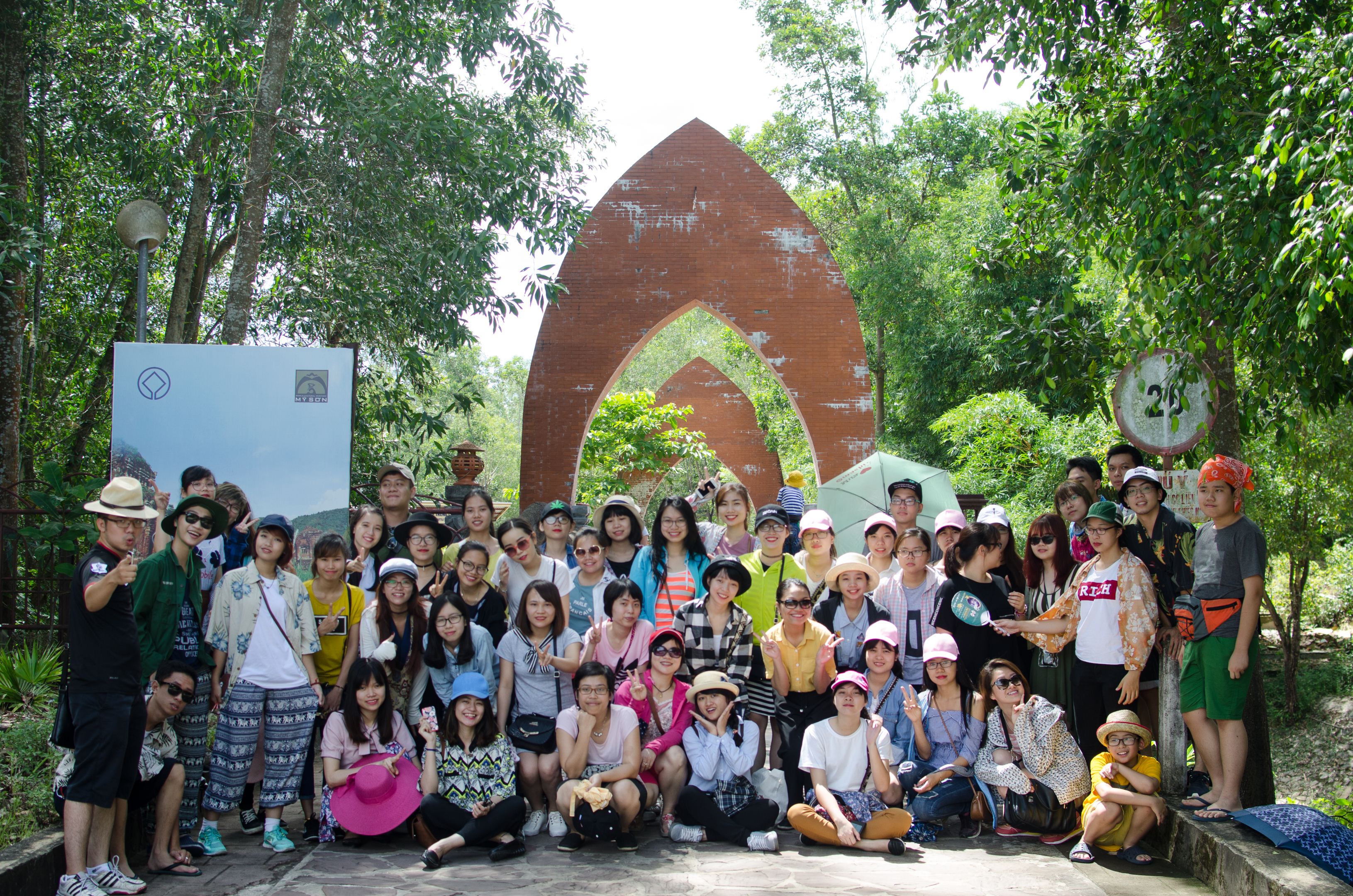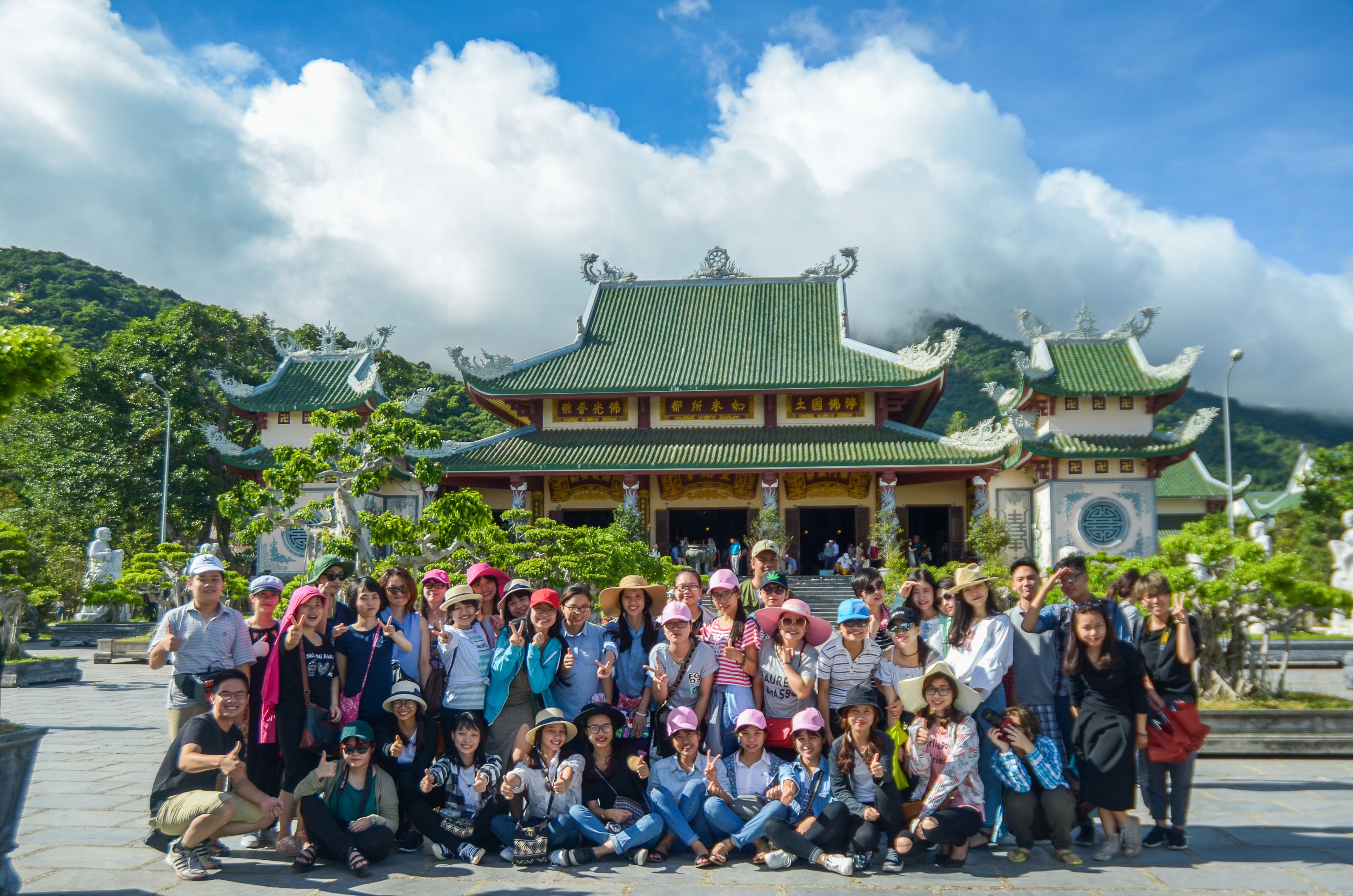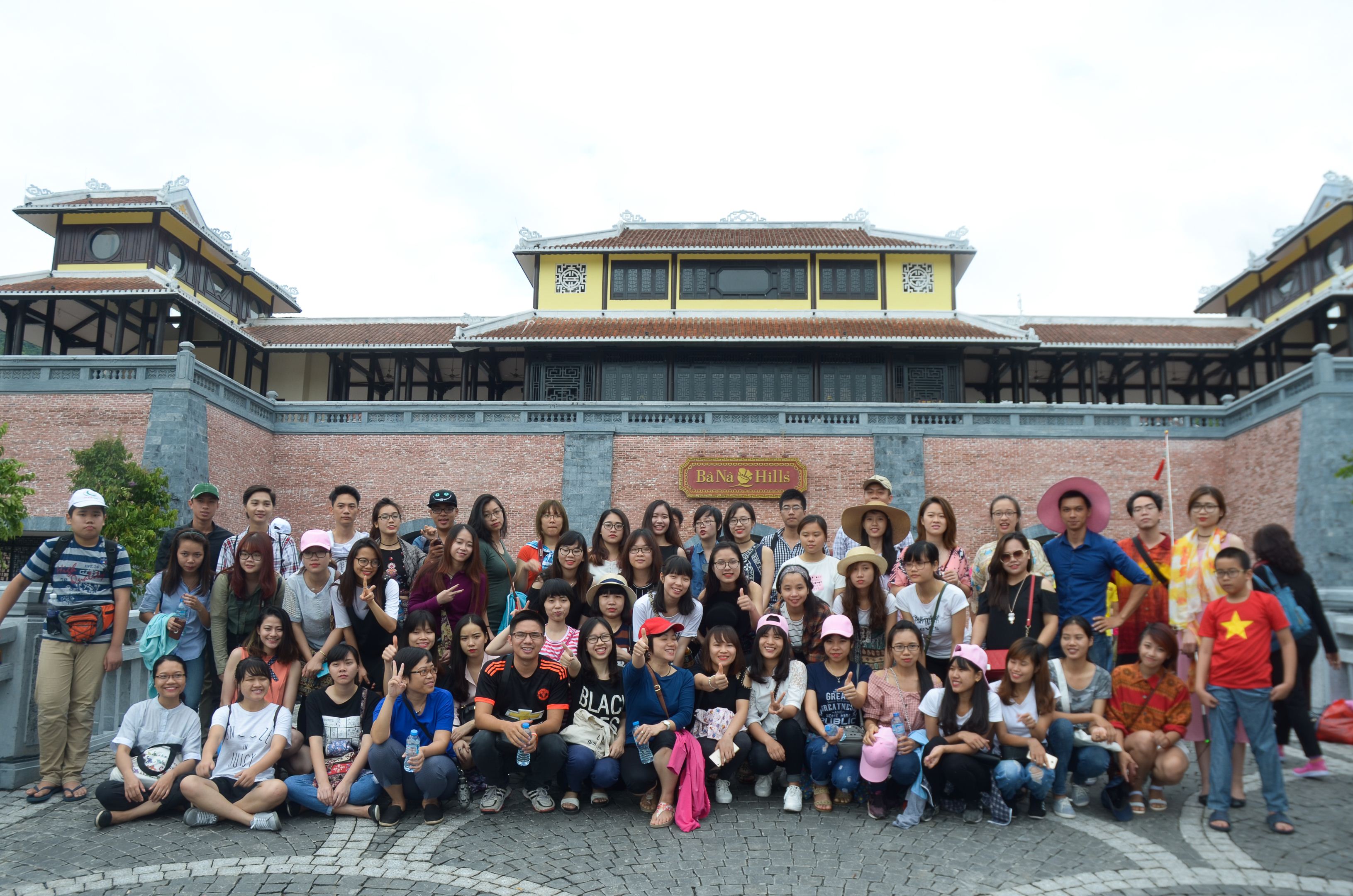
Seeing is believing!
At 7am, we arrived in Da Nang - the most livable city in Vietnam. During our 2 days here, we visited many places and listened to many stories. From the Cham Museum with its cultural relics, to Linh Ung Pagoda with its 68m high statue of Guanyin overlooking the sea, to Ba Na Hill, a paradise on earth, and the poetic My Khe beach, and finally, a meeting with the Greenviet media department about the conservation and maintenance of the red-shanked douc langur.
Each destination has its own story, its own lesson for us to contemplate and understand more about Da Nang, about how Da Nang creates its own identity, how they attract and retain tourists when they come here. Those are really interesting things, new lessons for us.
Coming to the Cham Museum, we were amazed by an ancient culture, told through artifacts dating back thousands of years. It contains a lot of data about the culture of an era, an entire nation. When setting foot in Linh Ung Pagoda, we can easily feel the quiet space at the Buddha's door with statues of 18 Arhats right in the middle of the pagoda yard, along with a complex of many different shrines, all of which have created a spiritual cultural space for this land. Coming to Ba Na Hill, we seem to be immersed in the space of Europe in the last century with houses, castles, churches and even windows in Shakespeare's novels. All have created an interesting tourist space for Da Nang, from nature, to culture, spirituality and modernity, everything seems to blend together to create an environmentally friendly Da Nang, a Da Nang that knows how to take advantage of natural and artificial resources for development.

In particular, through the exchange with Greenviet Center, we better understood how Da Nang is protecting the green of its homeland, protecting the primeval forests right in the heart of the city. This is achieved through the consensus of both the people and local officials. They have been - are - and will be protecting the green of their homeland, protecting the natural beauty, in addition to constantly renewing the city. This has given us valuable lessons about how development must go hand in hand with protection. Only then will development be sustainable and create a balance between the environment and humans, between nature and man-made.
Furthermore, the people of Da Nang are extremely friendly, and they have a very high sense of discipline. It is rare to see anyone making traffic mistakes on the road, or littering. They have built up for themselves a sense of protecting the place where they live. The people of Da Nang that we were fortunate to have the opportunity to meet and exchange with, such as Ms. Le Thi Trang, deputy director of GreenViet Center, Mr. Le Xuan Tien, tour guide in My Son, Mr. Phung Tan Dong, a cultural expert in Hoi An... are all extremely professional, enthusiastic, deeply knowledgeable and passionate about their fields of expertise. They have given us strong inspiration about their work, their profession, the land and the people here. Is this also the reason why tourists always feel nostalgic and want to return when leaving Da Nang?

The key to Da Nang's success today is that they always respect the environment, the diversity of terrain, along with building the image of a friendly, clean city with a series of interesting destinations. To achieve this, it is largely thanks to the strength of the local government apparatus that dares to think and act based on the interests and aspirations of the local people.
The mark of converging valuesculture of many ages
Da Nang - Hoi An - My Son, where the cultural beauty of an entire region is hidden, along with the cultural exchanges that are clearly shown through each era. If Da Nang is the modernity of a city rising on the background of nature and culture, My Son is the story of a thousand years ago with ancient towers built from the 4th century. Each tower contains its own mysteries about the beliefs and culture of an ancient culture that was once forgotten and is now becoming a highlight of the history of international cultural exchange, attracting and holding back many people when visiting this place.
Hoi An is a special case, a place that was once a bustling trading port, but then forgotten, and now Hoi An is reviving its vitality with tourism. Here, there is a cultural exchange between Vietnam - China - Japan, all expressed through the architecture, as well as the customs of the people here. When you set foot in Hoi An, you seem to step into another world with the Japanese Covered Bridge, Assembly Hall, ancient houses, and colorful lanterns. All tell the story of a bustling trading Hoi An, with a long tradition of international economic and cultural integration that today's young people are surprised and admire.
The three locations seem to be separate, but they are all connected by cultural values, along with traditional beauty, which are now gradually being restored and becoming the "soul" of this place. This is also the key point attracting domestic and foreign tourists.

Found the tree of life that is forever green
From what we saw, heard and felt, we have drawn our own lessons. It could be the lesson about how Da Nang is developing tourism, or simply the way Greenviet Center is persistently communicating about the protection of the Red-shanked Douc Langur. Or the way Hoi An is implementing to balance the management problem between economy - conservation - development, is the harmony of interests between the government and the people in preserving culture... We exploited those lessons to prepare for the final project of the subject.Tpracticeeconomyon communication to build and develop the image of Da Nang. It seems that the examples of theories, strategies, and tactics in the field of PR that we have learned in the classroom are unfolding vividly right before our eyes. If the saying "theory is all gray, only the tree of life is forever green" is true, then we have found countless green colors of PR lessons on this trip. Big and far are the lessons about building and developing the image of a city from its identities such as geography, history, culture... to continuously exploit sustainable benefits from it in many aspects. Closer to home are the “green trees” about organizing a trip for a class, how to make members more connected and work together more effectively, how to manage risks that may occur on a long journey… This is the reason why we eagerly search together at destinations to find something new or to enhance a familiar feeling, as well as about ourselves.
Although the actual time was short, it was like glue that bound us together so that we had more time to understand each other. University is a wide open life, sometimes it is difficult to meet each other. But through this trip, I understood more about each person's personality and habits. It helped us love and share more. We had moments together playing in the waves, playing in the sand on the ocean, laughing and talking happily on the bus, having a heart-stopping moment on the cable car, and being excited about each destination. And then being happy together after each journey. Above all, we seemed to be one, sympathizing and understanding each other.
We learned that, not only in the classroom but also from what we experienced, heard, saw, and always thought like a professional to ask questions, find answers or find paths that no one had taken. This was truly a meaningful and invaluable journey in the student life with countless useful things filled in the “three-gang bag” of students preparing to leave school and take steady steps in their careers.
[1]Associate Professor, Dr. Nguyen Thi Thanh Huyen, Head of PR - Advertising Department, Faculty of Journalism and Communication, University of Social Sciences and Humanities (VNU Hanoi) - editorial note.
Author:Do Truong Son, student K58PR - Faculty of Journalism and Communication
Newer news
Older news